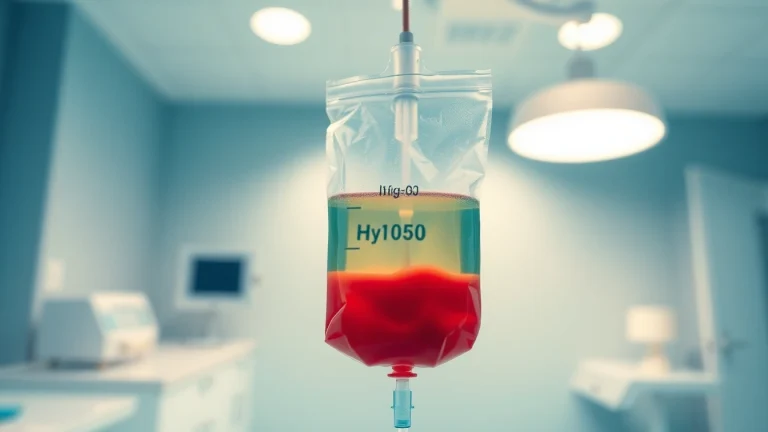
Understanding Paranoid Personality Disorder: Symptoms, Causes, and Treatment Options
What is Paranoid Personality Disorder?
Definition and Overview
Paranoid Personality Disorder (PPD) is a complex mental health condition characterized by an enduring pattern of pervasive distrust and suspicion of others. Individuals with PPD often perceive malevolent intentions in the actions of those around them, leading them to interpret even benign or neutral interactions as threatening. This heightened state of vigilance can significantly impair an individual’s ability to form and maintain healthy relationships, navigate social situations, and function effectively in daily life. According to the paranoid personality disorder criteria found in diagnostic manuals, this disorder is often marked by a range of specific symptoms that manifest across various contexts.
Key Symptoms of Paranoid Personality Disorder
The symptoms of paranoid personality disorder can vary widely among individuals, but they typically include:
- Suspiciousness: A pervasive belief that others have ulterior motives.
- Hypervigilance: An increased alertness to potential threats or slights.
- Interpreting benign remarks: Misunderstanding benign comments or events as hostile or demeaning.
- Emotional detachment: Difficulty trusting others and a reluctance to share personal information.
- Hostility: A tendency to respond with anger or hostility to perceived criticism or threat.
These symptoms typically emerge in early adulthood and span different contexts, illustrating a consistent pattern of thought and behavior.
Differences from Other Personality Disorders
Understanding how paranoid personality disorder differs from other personality disorders is crucial for accurate diagnosis and treatment. For example, while individuals with paranoid personality disorder primarily exhibit distrust and suspicion, those with schizophrenia may experience delusions that are not based on interpersonal relationships. Similarly, borderline personality disorder (BPD) often features significant emotional instability, which is less prominent in PPD. Recognizing these distinctions can aid clinicians in providing appropriate care tailored to unique presentations of mental distress.
Identifying the Symptoms
Common Behavioral Indicators
Behavioral indicators of paranoid personality disorder often manifest in social settings as individuals exhibit distrust towards acquaintances, coworkers, or even family members. These individuals may avoid forming deep relationships, maintaining an emotional and physical distance from others. In interactions, they frequently appear guarded, responding defensively to perceived slights or misunderstandings.
Emotional Responses Associated with Paranoia
The emotional landscape of individuals with PPD is characterized by a pattern of anxiety, irritability, and mood instability. Many individuals may experience intense feelings of anger when they feel slighted. This can lead to emotional outbursts, damaging relationships and isolating the individual further. The persistent nature of these emotional responses can create a vicious cycle that exacerbates feelings of alienation and mistrust.
Impact on Daily Life and Relationships
The impact of paranoid personality disorder on daily life is profound. Workplace functioning can suffer as individuals with PPD may misinterpret colleagues’ behaviors or intentions, leading to conflicts and isolation. In personal relationships, friends and loved ones may find it difficult to connect or communicate effectively due to the ongoing mistrust and suspicion. This can hinder emotional intimacy and lead to significant social alienation, affecting overall quality of life.
Causes and Risk Factors
Genetic Influences on Paranoid Personality Disorder
Research indicates that genetic predisposition may play a role in the development of paranoid personality disorder. Individuals with a family history of personality disorders may be more susceptible to developing PPD themselves, suggesting that both hereditary and environmental factors can contribute to the disorder’s emergence. Twin studies have also indicated a potential genetic component, underscoring the significance of hereditary factors in mental health.
Environmental Contributions and Experiences
Environmental influences significantly shape an individual’s worldview, especially during formative years. Experiences such as trauma, abuse, or neglect in childhood can predispose one to developing paranoid thoughts and behaviors. Individuals raised in environments characterized by chaos or betrayal often find it challenging to trust others in adulthood, perpetuating a cycle of paranoia and social withdrawal.
Psychological Theories Behind Paranoia
Several psychological theories seek to explain the cognitive processes that underlie paranoid beliefs. Cognitive models suggest that individuals with PPD often exhibit cognitive distortions, leading to a selective interpretation of experiences that confirms their distrust. This can manifest as a confirmation bias, where individuals focus on information that reinforces their paranoid worldview while dismissing evidence that contradicts it. This cognitive pattern can create and sustain the symptoms of PPD, making therapeutic intervention crucial for recovery.
Treatment Approaches
Therapeutic Options for Managing Symptoms
Treatment for paranoid personality disorder generally focuses on psychotherapeutic interventions aimed at helping individuals build trust and develop healthier relationships. Cognitive-behavioral therapy (CBT) is particularly effective in challenging distorted beliefs and thought patterns associated with paranoia. By exploring the origins of these beliefs, therapists can assist individuals in developing a more balanced perspective, fostering better social connections.
Medication Alternatives and Their Efficacy
While no medications are specifically approved for paranoid personality disorder, some individuals may benefit from pharmacological interventions. Antidepressants or antipsychotic medications might help manage anxiety and mood symptoms that often accompany PPD. A mental health professional should evaluate and monitor any medication treatment to ensure its appropriateness and effectiveness for the individual’s overall treatment plan.
Building Support Systems for Recovery
Creating a robust support system is essential for individuals with paranoid personality disorder. Family therapy can serve as a helpful tool to educate family members about PPD, foster understanding, and encourage supportive communication. Support groups can also provide a sense of community, allowing individuals to connect with others who share similar experiences and challenges. Establishing these networks can help individuals feel less isolated and more empowered in their recovery journey.
Living with Paranoid Personality Disorder
Strategies for Family and Friends
Family members and friends of individuals with paranoid personality disorder can adopt various strategies to support their loved ones effectively. Open, honest communication is vital, as is expressing care without overwhelming them. It is also important to encourage professional treatment while respecting their need for autonomy. Understanding the disorder’s complexities can foster empathy and patience, which are crucial for sustaining relationships.
Personal Coping Mechanisms
Adopting coping mechanisms and strategies can be beneficial for individuals living with PPD. Mindfulness techniques, for instance, can help ground oneself in the present and reduce feelings of anxiety and suspicion. Journaling can also provide a safe outlet to express feelings and reflect on distorted thoughts, enabling individuals to identify and challenge harmful interpretations of social situations.
Resources for Ongoing Support
Access to appropriate resources is crucial for ongoing support in managing paranoid personality disorder. This includes seeking professional mental health services, attending self-help groups, and utilizing educational materials on the disorder. Various mental health organizations provide valuable resources, including hotlines, online forums, and workshops that focus on building skills for managing paranoia effectively and improving interpersonal relationships.


